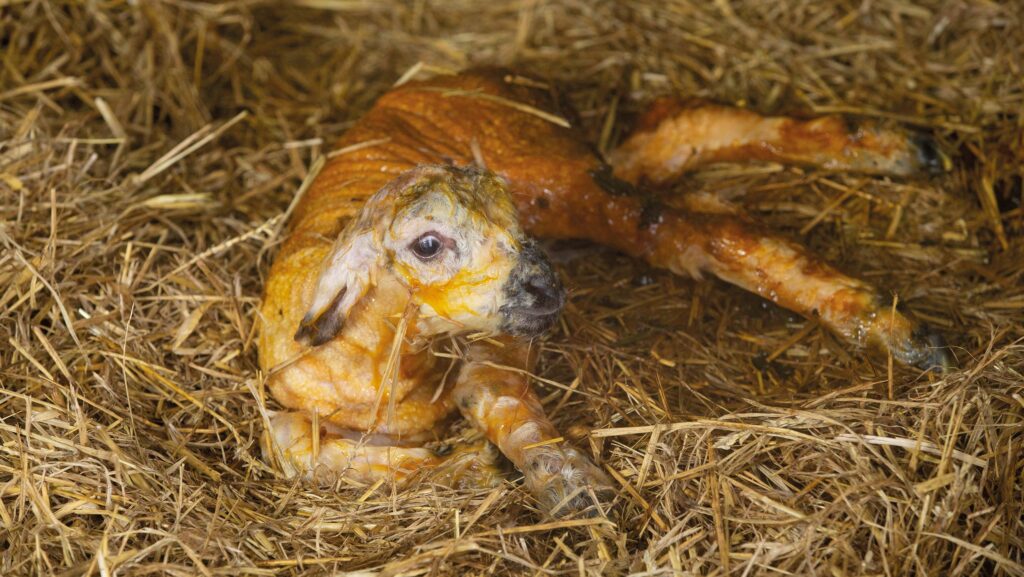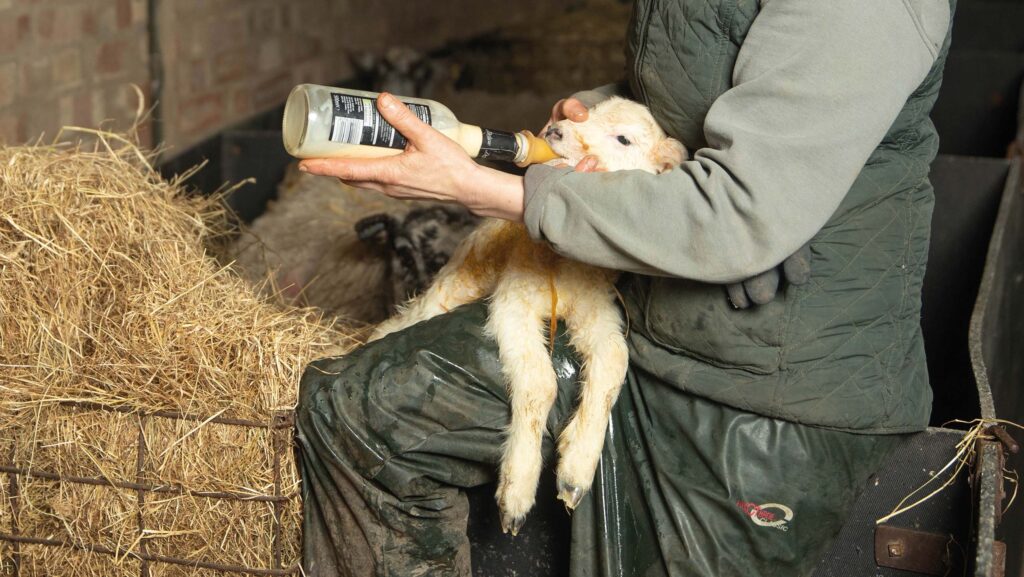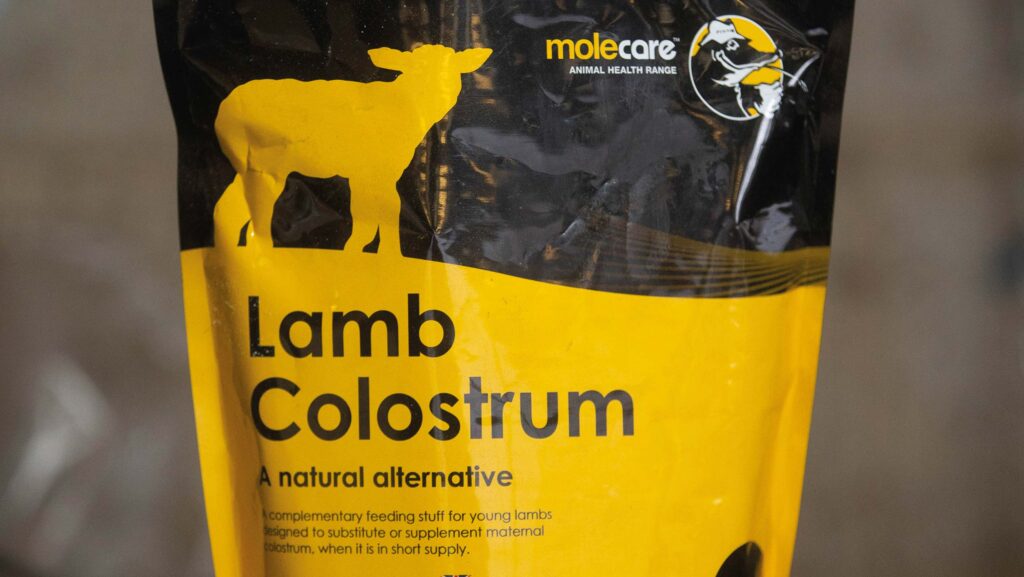Poor colostrum handling risks lamb survival, research shows
 © Tim Scrivener
© Tim Scrivener Poor standards of hygiene when handling supplementary colostrum are leaving many lambs susceptible to disease and death.
Scottish research has shown that instead of giving them a better start, farmers could unintentionally be doing more harm than good.
Colostrum failed 80% of total bacterial count (TBC) tests in a trial focused on a typical commercial flock in the 2024 lambing season.
Subsequent blood tests also showed more than 15% of lambs fell below the threshold for good transfer of immunity.
See also: Expert advice on assessing and managing lambing difficulties
However, the research, carried out by the University of Glasgow and Monitor Farm Scotland programme, found reasons to be hopeful.
While some colostrum samples showed extremely high contamination, others had a very low bacteria count.
Researchers concluded that, with a little more care and attention, much better results could be achieved by everyone.
Disease pressure
Vet, Ali Haggerty, of The Stewartry Veterinary Centre in Castle Douglas, Dumfriesshire, says, “Lambs have no antibodies of their own at birth.
“They are reliant on the transfer of antibodies from maternal colostrum across the gut to gain immunity to disease in the first few weeks of life.”
She carried out the research with Katharine Denholm and Kim Hamer, farm animal clinicians at the University of Glasgow’s School of Biodiversity, One Health and Veterinary Medicine.
“Bacteria can inhibit the transfer of passive immunity to the lamb, break up the antibodies in colostrum rendering them ineffective, and block the uptake of antibodies across the lamb’s gut,” says Ali.

© Tim Scrivener
“They can also damage the gut itself, meaning antibodies can no longer cross, and, of course, can cause disease in their own right.”
The result is lambs that grow less well and are more likely to become ill and die, she warns.
Researchers looked at coliforms – the bugs that can be particularly responsible for the deleterious effects on colostrum and are associated with faecal contamination.
They found 60% of on-farm samples exceeded acceptable thresholds.
While these results may seem shocking, they are likely to be typical of many farms, as bacteria can quickly multiply, says Ali.
“Bacteria grow exponentially and can double their population very, very rapidly.
“Colostrum left at ambient temperature – like you might find sitting in a container or in feeding equipment in the lambing shed while you’re busy working around the pens – offers both the optimal temperature and nutrients that speed up bacterial growth,” Ali explains.
“As an example, bacteria like E coli can have a generation time of 20-30 minutes, so if we start with, say, 1,000 bacteria, the population could increase to 2,000 in 20 minutes, 4,000 in 40 minutes, 8,000 in an hour and so on.”
Although specific cleanliness thresholds for sheep have not been defined, guidelines based on those for artificially reared dairy calves recommend keeping the TBC below 100,000 colony forming units (CFU)/ml and the total coliform count (TCC) at less than 10,000 CFU/ml, says Ali.
The power of colostrum
Colostrum is liquid gold, says vet Ali Haggerty of The Stewartry Veterinary Centre.
As well as containing important bioactives, its high fat content is crucial for lambs, as they have a high ratio of surface area to bodyweight, and are susceptible to thermal stresses.
“The aim should always be to ensure colostrum achieves as high as possible a concentration of antibodies in the lambs’ blood.
Then you are starting to get away from just preventing lambs from dying to actively increasing their growth and survivability,” she says.
Scope for improvement
While some samples in the on-farm research showed extremely high contamination, with TBCs reaching 4.7m CFU/ml and TCCs of 120,000 CFU/ml, others were impressively clean, with very low bacteria levels.
“This shows that achieving clean samples is entirely possible with a little extra care and attention. Consistency is crucial, even amid the demands of a busy lambing season,” she says.
“The critical message for anyone lambing is that these results indicate that where colostrum has not been stored correctly, and/or equipment is not properly cleaned, giving supplementary colostrum to lambs has potential to cause more harm than good.
“However, the fact that some samples on farm were impressively clean, with very low counts, shows that achieving clean samples is possible.”
The aim should be to minimise the number of lambs requiring routine supplementation with colostrum.
Lambs should be up and suckling ewes directly, as this can be a hygienic option (as long as bedding in lambing pens is clean and dry) as well as improving the crucial maternal bond, she says.
“However, this is not always possible, so use time pre-lambing to review your colostrum storage and equipment hygiene protocols so it can be done consistently well, even at the height of lambing.
“The message from this on-farm research is to think now about how you will maintain the quality and hygiene of supplementary colostrum during this year’s lambing and avoid potentially serious unintended consequences,” Ali concludes.
The research was funded by the Monitor Farm Scotland programme (managed by Quality Meat Scotland and funded by Scottish Government) and Livestock Health Scotland.
Colostrum storage and equipment hygiene checklist
- Check feeding equipment for any damage, as perishing areas can harbour bacteria, as well as harming lambs’ throats.
- Before lambing and after every use (or as near as possible during a hectic lambing), clean all storage and feeding equipment thoroughly with a scrubbing brush, detergent and hot water, and then disinfect. Ensure all fatty milk/colostrum deposits are removed, as these harbour bacteria. Also keep disinfectant fresh and clean – organic matter deactivates it, and it can become a “bacterial soup”.
- Purchase multiple feeders to allow for thorough cleaning after every use.
- If not fed immediately, chill colostrum at 4C (for up to 24 hours) to prevent bacteria growth.
- Alternatively, freeze excess colostrum at -20C for up to six months. Thaw in a warm water bath at 30-40C before feeding.
- Ewe colostrum is always best for supplementation if it can be used quickly, or frozen promptly after collection and defrosted in a warm water bath.
- A good-quality colostrum replacer can be made up as required, as opposed to prolonged colostrum storage at room temperature. All mixing equipment must be well cleaned every time.

© Tim Scrivener
- A “lambing shed kitchen” can make colostrum management and hygiene easier and more consistent during lambing. Ideally, this will include instant hot water, an electricity supply, space to work, a sink, and the required detergents such as basic washing-up liquid, a disinfectant, appropriate bottle brushes and so on.
- A working fridge is an important part of the kitchen, as bacteria multiply very quickly in ambient temperatures – it must chill at a consistent 4C. Colostrum should be stored in a covered or sealed container to minimise contamination with organic matter.
Source: Ali Haggerty
